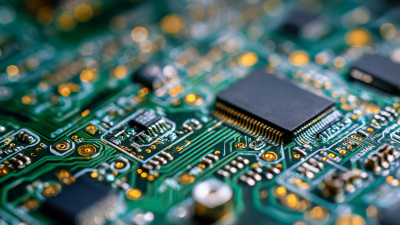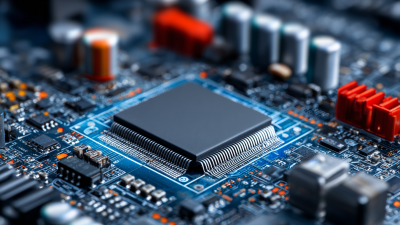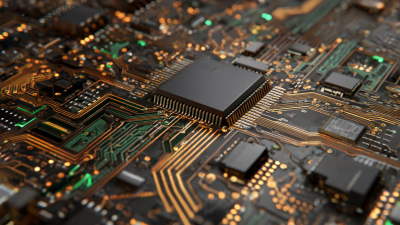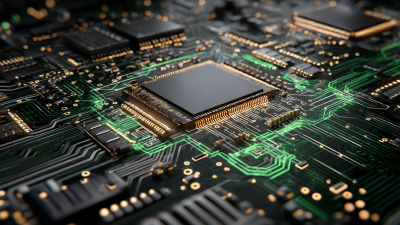Choosing the right circuit board components is critical for the success of any electronic project, impacting performance, reliability, and overall system efficiency. According to recent industry reports from sources such as MarketsandMarkets, the global printed circuit board market is projected to reach USD 93.1 billion by 2025, showcasing the increasing demand for innovative and reliable electronic designs. As the complexity of electronic devices grows, the right selection of circuit board components becomes even more vital; quality components can significantly shorten development time and reduce long-term costs. Furthermore, a study published by IPC indicates that improper component selection can lead to up to 50% of project delays, emphasizing the importance of making informed choices in this critical early stage. With the right approach and understanding, engineers and designers can optimize their designs and ensure the longevity and performance of their products in a competitive market.

When choosing components for circuit boards, the quality of each component plays a crucial role in the overall performance of the board. High-quality components can lead to improved reliability, reduced failure rates, and efficient power consumption, making them essential for any successful electronic project. Conversely, low-quality parts can introduce vulnerabilities, such as heat generation and signal interference, which may severely compromise the circuit’s functionality. Thus, understanding the impact of component quality is paramount for engineers and designers alike.
Moreover, investing in reputable components often results in long-term cost savings. While cheaper alternatives may seem attractive upfront, they can lead to greater maintenance costs and potential project delays due to failures. It is essential to evaluate vendors and their offerings meticulously, considering factors like customer reviews, warranty policies, and historical performance data. Ultimately, the right choice of components not only enhances circuit board performance but also builds a foundation for innovation in technology.
| Tip | Description | Impact on Performance |
|---|---|---|
| 1. Understand Your Application Requirements | Determine the specific requirements for your circuit, including voltage, current, and frequency. | Ensures appropriate component selection for reliability and functionality. |
| 2. Prioritize Quality Over Cost | Select components from reputable manufacturers with a track record for quality. | Improves longevity and reduces failure rates in the circuit. |
| 3. Consider Temperature Ratings | Choose components that can withstand the operational environment temperatures. | Prevents overheating and ensures stable performance. |
| 4. Check for Component Availability | Ensure that chosen components are readily available for purchase. | Reduces lead times and enhances project timelines. |
| 5. Evaluate Physical Size and Footprint | Assess the dimensions to ensure they fit into the design layout. | Facilitates efficient design and assembly. |
| 6. Review Electrical Specifications | Ensure components meet voltage, current, and power ratings. | Maintains performance under load without failure. |
| 7. Investigate Reliability Testing | Choose components that have undergone rigorous testing. | Assures quality and reduces risk of failure in the application. |
| 8. Understand Lead Configuration | Check the lead type and layout for compatibility. | Ensures proper soldering and electrical connections. |
| 9. Consider Environmental Compatibility | Select components that comply with environmental standards. | Promotes sustainability and reduces ecological impact. |
| 10. Keep Up with Technology Trends | Stay informed about new materials and technologies. | Increases innovation and enhances circuit performance. |
When designing a circuit board, selecting the right components is crucial to the overall performance and reliability of your device. One of the key factors to consider is the component specifications. Metrics such as voltage rating, current rating, and temperature range play a significant role in ensuring that components will function correctly under the expected operating conditions. For instance, components with insufficient voltage ratings may fail or become damaged when subjected to peaks beyond their specifications, leading to circuit failures.
Another important metric is the component's tolerance and variations, which can affect both performance and reliability. Understanding the acceptable limits for each component can help in making informed decisions that align with your design requirements. Additionally, grasping the concepts of power dissipation and the thermal characteristics of components is essential, especially in high-performance applications. The right components not only enhance functionality but also contribute to the longevity of your design, making it essential to evaluate these specifications carefully before making your final selections.

When designing circuit boards, engineers often face the challenge of balancing budget constraints with the need for high-quality components. According to a report by the International Society of Automation (ISA), approximately 60% of project delays in electronics design are attributed to component quality issues. This highlights the importance of investing in reliable components, as they not only ensure the functionality of the product but also reduce long-term costs associated with failures and reworks.
In an analysis conducted by the Electronics Industries Alliance, it was found that 70% of component-related failures arise from low-quality parts, stressing the need for a careful selection process. While cheaper components may seem attractive initially, they can lead to reliability problems that ultimately compromise the entire system. Engineers are advised to conduct comprehensive cost-benefit analyses that factor in both initial investment and the potential for increased maintenance or replacement costs, ensuring they make informed decisions that align with their project's overall goals.
As electronic devices become smaller and more compact, the trend of component miniaturization has a significant impact on circuit board design. When working on space-constrained projects, selecting the right components becomes crucial not only for functionality but also for efficiency. Designers must consider several factors, such as size, performance, and power consumption, to ensure that their circuit boards can support advanced features within the limited space available.
One effective strategy in component selection for miniaturized designs is to prioritize multi-functional components. By choosing parts that can perform multiple tasks, designers can reduce the overall number of components needed, thereby saving space. Additionally, it's essential to stay updated on emerging technologies in component fabrication, as innovations often lead to smaller, more powerful parts. For instance, advancements in surface mount technology (SMT) and chip-on-board (COB) designs can significantly enhance the compactness of circuit boards while maintaining or even improving performance.

As sustainability gains traction across industries, the electronics sector is witnessing a significant shift towards eco-friendly circuit board components. The demand for materials that minimize environmental impact is being driven by an increasing consumer awareness of climate change. Innovative production technologies now allow manufacturers to select biodegradable substrates, which not only reduce waste but also contribute to a more sustainable lifecycle for electronic devices. Recent studies emphasize the potential of these materials, suggesting they represent a promising pathway toward achieving greener electronics.
Moreover, recycling processes for critical materials such as tantalum and base metals from waste printed circuit boards are becoming more efficient, utilizing advanced techniques like deep eutectic solvents. This not only mitigates the ecological burden of e-waste but also recovers valuable resources that would otherwise remain untapped. Although some studies indicate that consumers may not always prioritize sustainability in their purchasing decisions, the increasing availability of eco-friendly options signals a transformative trend. Electronics manufacturers who embrace sustainability stand to benefit not only from compliance with regulations but also from meeting the evolving demands of environmentally conscious consumers.







